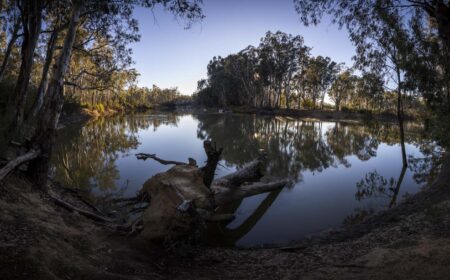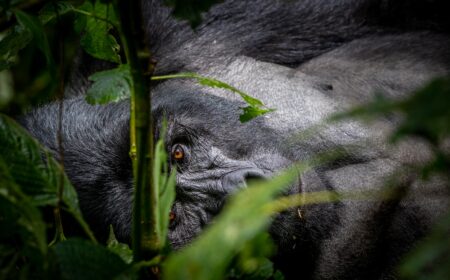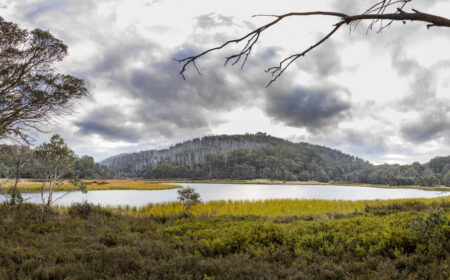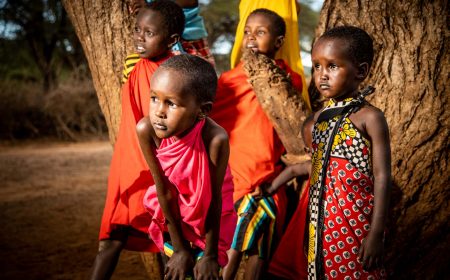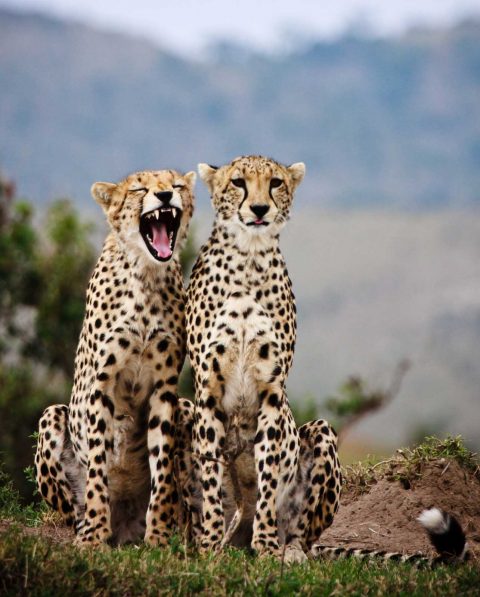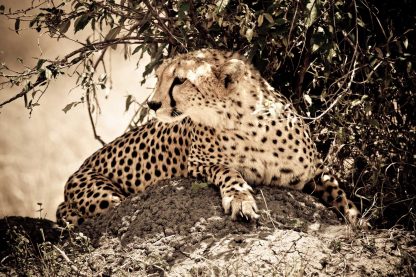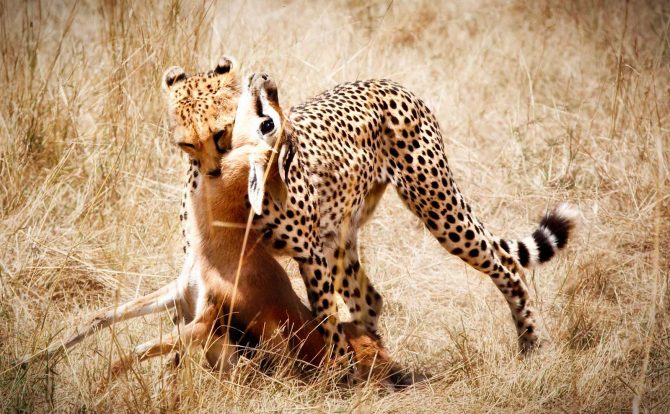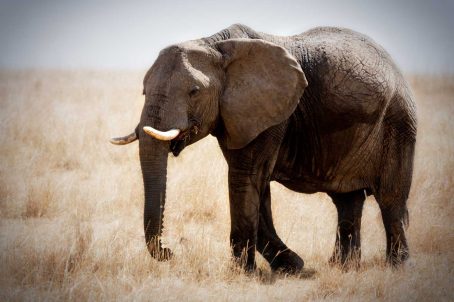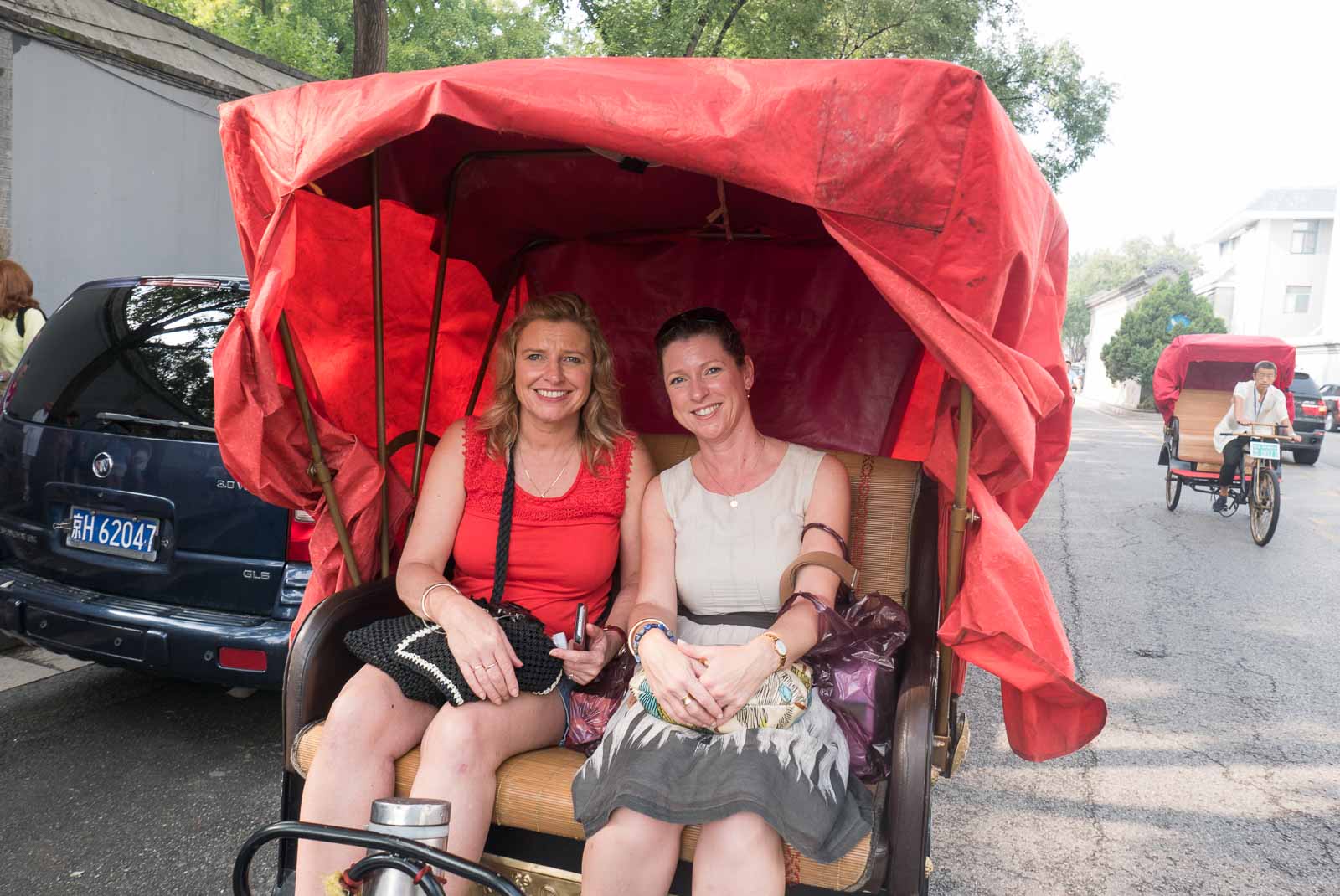The Masai Mara is one of the most well known of all the National Parks in Kenya. And it certainly didn’t disappoint.
Within minutes of arriving in the park, we heard word that a leopard had been spotted and raced through the park to catch a glimpse.
Our efforts were rewarded. The leopard was sunning itself in the fork of a tree, we moved around to view it from different angles, and got caught in a traffic jam of tourist vans – one of which got its wheel stuck on the road and had to be pushed out by another van – no one was getting out to help the driver with a leopard so close.
After leaving the leopard we encountered a pride of nine lions, lazing on a rock, with the big daddy not too far away relaxing in the long grass. The lions were quite active – frolicking around with each other. One had found a discarded water bottle to play with – the destruction of man once again impeding on nature.

Not a bad viewing effort for just a couple of hours in the park – as well as the lions and leopard, we had seen buffalo and elephants as we drove around – four of the big five in just two hours.
Our hotel, Mara Manyatta, was located just outside the national park, right next to a small Masai Village. The village immediately next to us was modern by Kenyan standards, but surrounding this village were a number of traditional villages. From our campsite, we could hear the Masai herding their goats and cows past our tent of a morning and evening and there were always Masai hanging around the camp when we arrived “home” from drives.
Day two of our five days in the Masai Mara and we soon got word – through the African telegraph, the CB – of a cheetah sitting on a mound. We raced along the winding tracks and were busy photographing the cheetah when we realised there were actually two on the mound – a mother in full view and a baby hidden somewhat in the shrubs!
We moved on and came across another pride of lions relaxing in the trees. There were about nine lions, cubs and mum all in the bushes playing and snoozing!
On to lunch, which was sitting under a tree in the middle of the Mara – apparently there are no designated eating areas in the Masai Mara so you just take your chances wherever you can! We found, a lovely spot looking out over grazing zebra.
During lunch we got word of four cheetahs sitting on a mound! So we ate quickly and were off again. We found the cheetahs, a mother and her three cubs, and just one other van was there filming it. We had a fabulous view.
We had photographed the cheetah from almost every angle and were getting ready to move on when the mother got up and started walking off toward, we soon realised, giselle up on the hill. The babies followed, as did we! By now a third van had joined us, but it was just the three of us, watching and waiting to see what she would do.
We didn’t have to wait long for her to pounce and catch dinner for her babies – an amazing event to witness! She moved so quickly from crouching in the grass to accelerating to such speeds the giselle didn’t stand a chance. Then watched as she sat on a rock while her babies tucked into dinner! We were soon surrounded by other vans, so we moved on.
We headed to the Mara river where we saw heaps of hippos and some very large crocodiles! The hippos look so cute; it’s difficult to believe something that looks so relaxed and gentle can actually be so dangerous!
The crocodiles on the other hand do not look cute or gentle! But they are a very intriguing animal to look at. Funny to think that we have come all this way to see them when we have them back home in Australia!
We also finally got to see more rhino – this time two rhinos flirting with each other. Apparently they use those giant horns to gouge each other in the face – that’s their way of flirting!
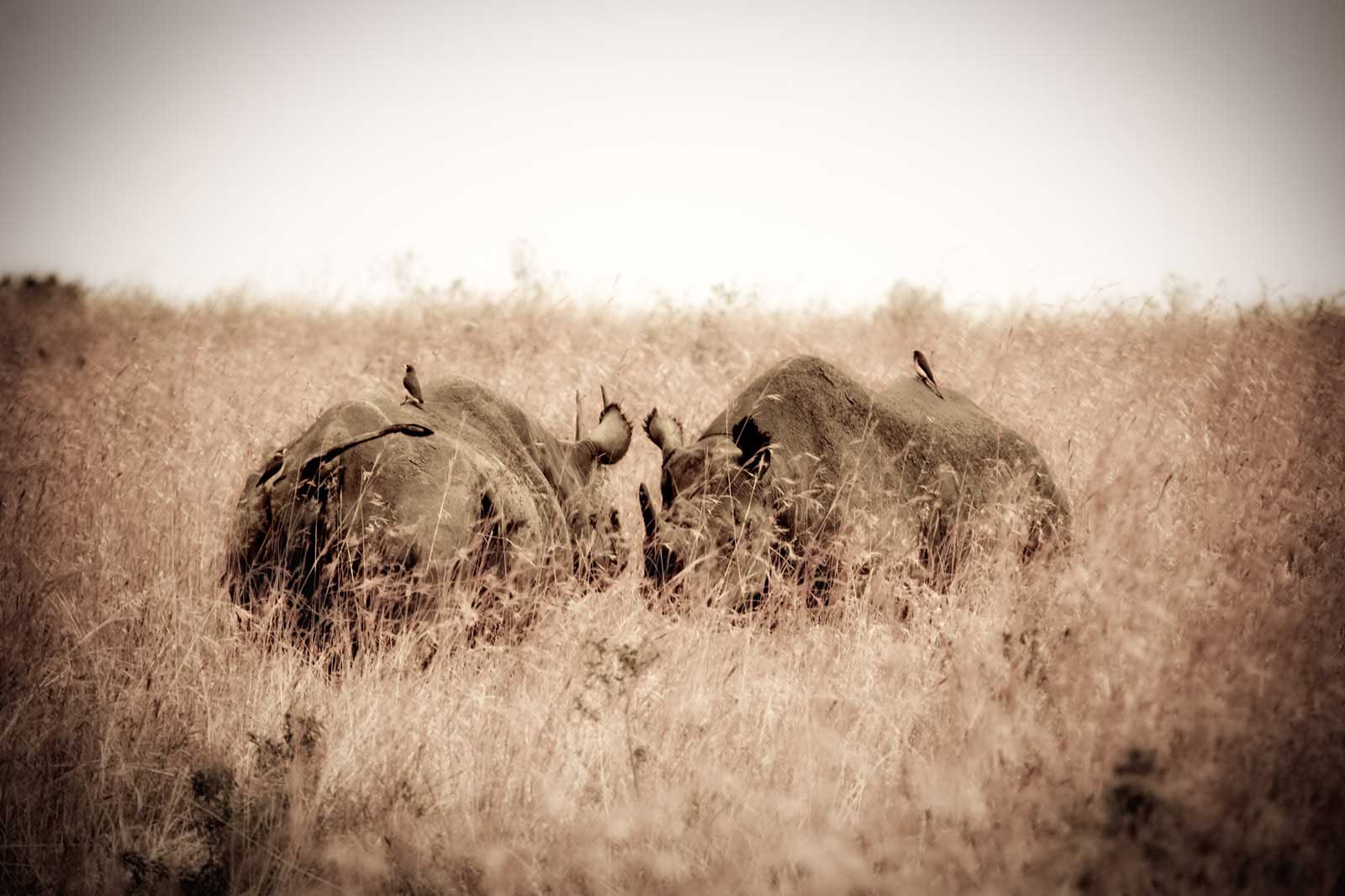
We planned to head back to the river in the next day or so to watch the wildebeest crossing the river – the great migration from the Serengetti in Tanzania, to the Masai Mara in Kenya.
It is said to be one of the most amazing experiences to witness in the animal world.
Another early morning, we had to leave the light on in our tent so that when the power came on at 6am it would wake us up! Power came on a little early – 5.45, so we were ready early, but then breakfast was a little late.
Not to worry, Jackson made up for any lost time. First up we saw a pride of lions. There were about six lions in the pride including a big male, all keeping an eye on buffalo hiding in the forest. The mother went for it, but the buffalo was too big and scared her somewhat so she took off. Apparently it takes two males to bring down a buffalo and there was only one male!
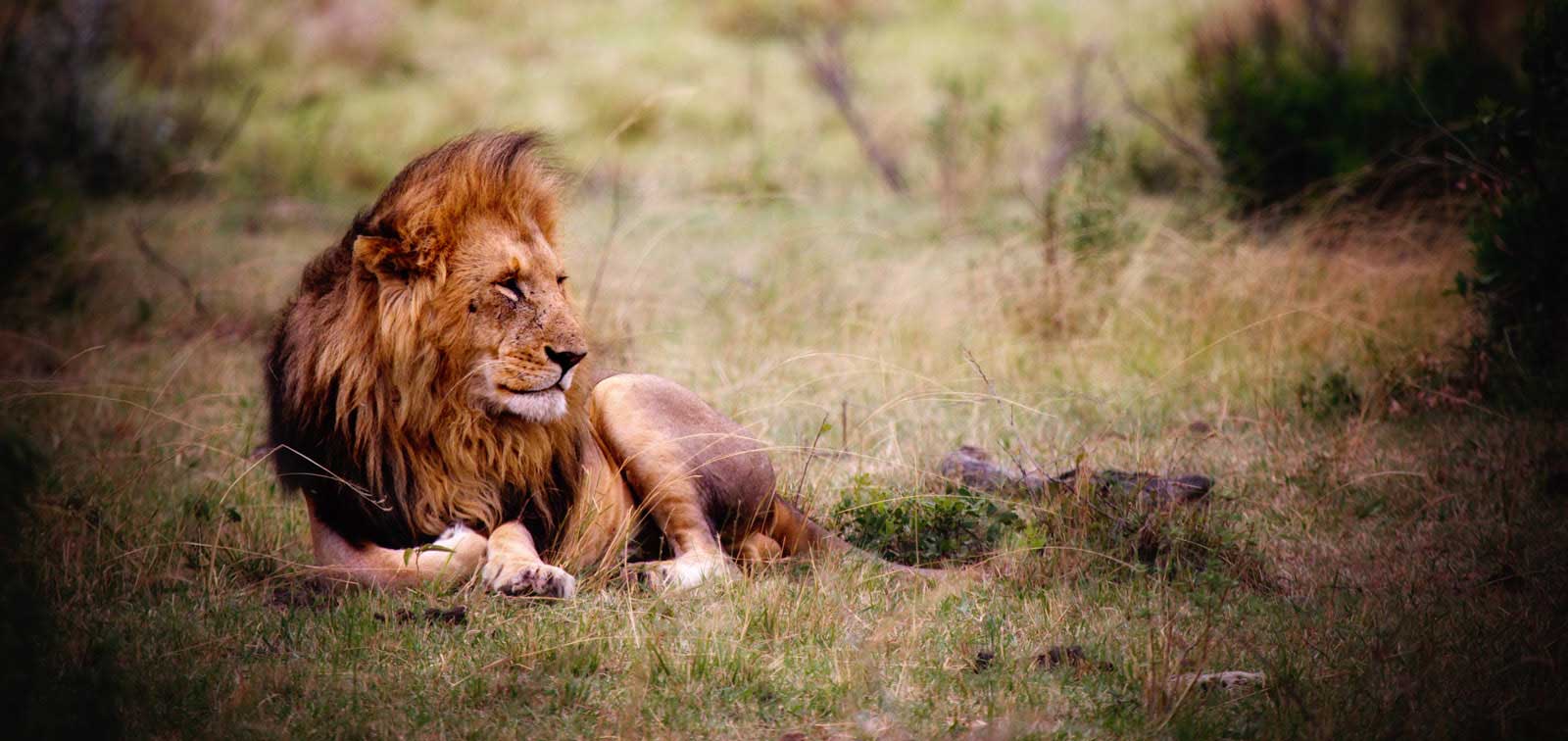
Not long after that we got word there was a rhino in the hills so we took off in search. It was to no avail; by the time we got there the rhino was back in hiding – which makes me wonder, how do you lose a rhino?
A quick stop back at a couple of lions we had seen earlier. Jackson spotted them from a mile away hidden in the trees, I did get a little freaked out as we moved in closer and then just about got stuck! But we managed to get away. The lions had a fresh zebra kill nearby, but had obviously had their fill and were now relaxing. On our second trip to see them one had moved down to a nearby watering hole so we followed her for a little before moving on.
Again we saw plenty of buffalo, wildebeest, zebra, antelope of all manner, a hyena and lots of vultures and we even saw two giraffe lying down – quite a sight!
We had been waiting to see a wildebeest crossing – our driver, Jackson had been promising us this since our first day in the Masai Mara, so on our third day we set out on our mission.
We were out of luck on our first attempt so we headed over to the Tanzania border where we were right on the crossover between the Masai Mara and the Serengetti. The two are separated by nothing but bollards – but then I guess if they put up fencing it would make it very difficult for the animals to cross, and the great migration would be somewhat curtailed.
We headed down to Sand River where we saw zebra and the wildebeest crossing the river, somewhat tentatively. It was only a small river – not much water – so the crossing wasn’t up to Jackson’s expectations. Though Ade and I did find it amusing watching the wildebeest jumping from the high banks into the river.

We sat and watched four cheetah sitting under a tree, sure they were about to get lunch, but Jackson was keen for us to see the wildebeest crossing the Mara River – a much wider river which has crocodiles and hippos in it!
So we left the cheetah and went to watch the wildebeest. The wildebeest follow zebra, who act as guides. As the vans piled up we sat and waited…and waited. The zebra went down the steep embankment, then went back up, another went down, then returned to the crowd. We could see a crocodile on the bank of the river below, but he was well out of view of the zebra and the wildebeest. Thousands of wildebeest had gathered waiting for the go ahead to cross from the zebra.
Four hours later, still no crossing where we were, a couple of vans began to move as apparently wildebeest just around the bend were crossing. We zoomed off, hoping to see at least some kind of crossing. Apparently the group at this point was smaller than where we were, but at least we would get to see a crossing.
That we did – it was one of the most distressing things I have seen. The zebra and wildebeest had crossed, but where they were trying to get up on the opposite riverbank was nothing but slate. The animals’ hooves struggled to get up the side, and they all kept slipping back down and into the water. One wildebeest couldn’t make it up, another made it up but had clearly hurt his leg, he limped off – destined no doubt to be dinner for a lion that night.
By this time the animals on the original bank had stopped crossing, they could see the difficulty those that crossed were experiencing, one very young zebra came running back up the bank – soaking wet. It’s mum had crossed but he had been unable to, we could hear the mother calling out from the other side and the foal answering – it was alone in a sea of zebra and wildebeest on this side of the river.
Again zebra wandered down to the river and looked like they may embark on the crossing, but by the time we left, there had been little, if any further movement. Meanwhile on the other side of the bank, those that had made it up the slate waited for the rest of the herd.
It was such a distressing event to witness.

Fast facts
We stayed at Mara Manyatta. It was cheap and well located, but very basic accommodation.
We stayed for five days.
Was it long enough? Five days is a long time, probably too long for most people, but it gave us a chance to really sit and watch and study the animals.
Highlights: There is nothing quite like hearing the roar of a lion in the wild, being surrounded by the lions and spotting the leopard. Oh and being welcomed into the homes of the Masai.
Join on Facebook, Twitter and Instagram for more travel chatter.
